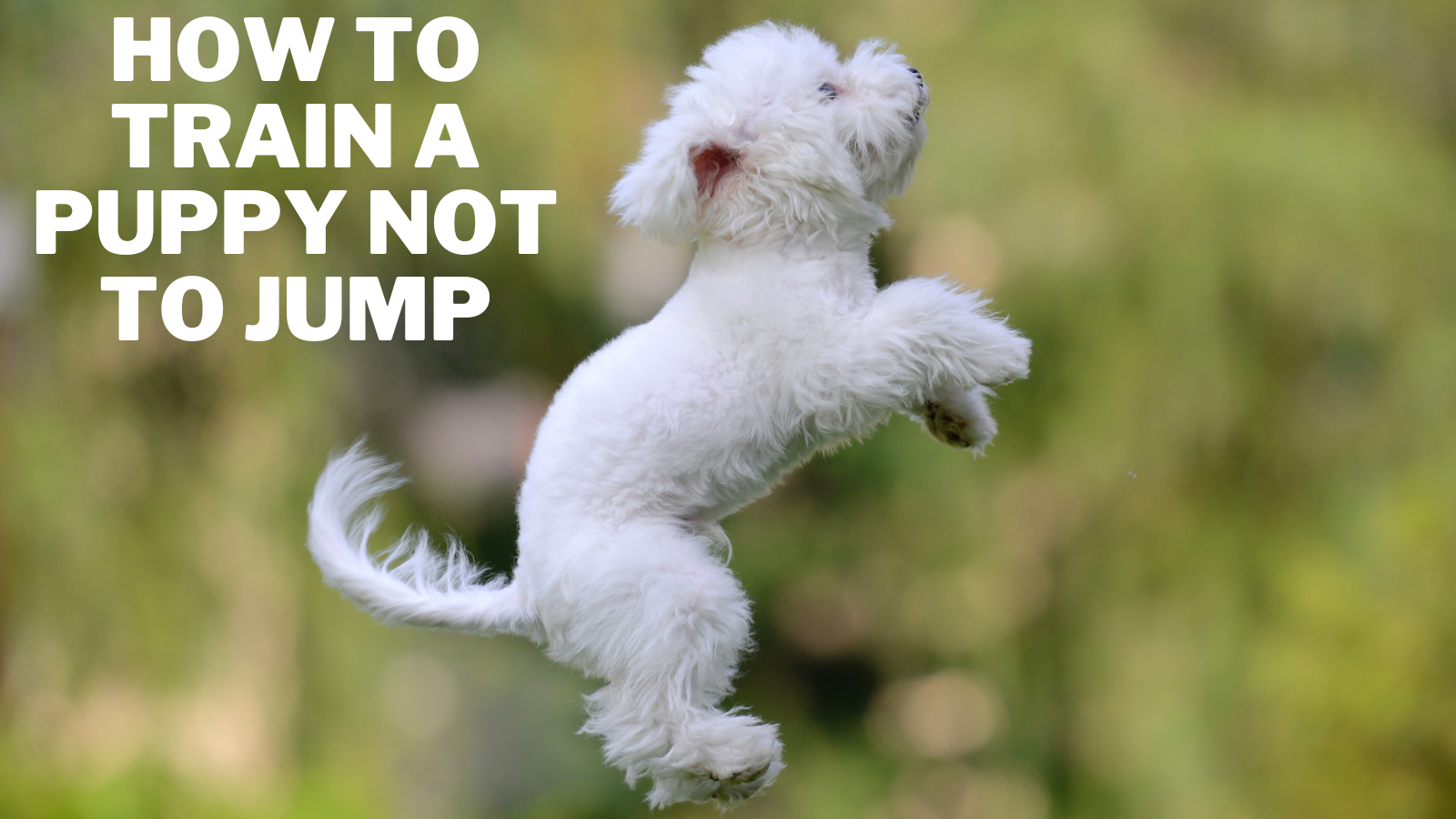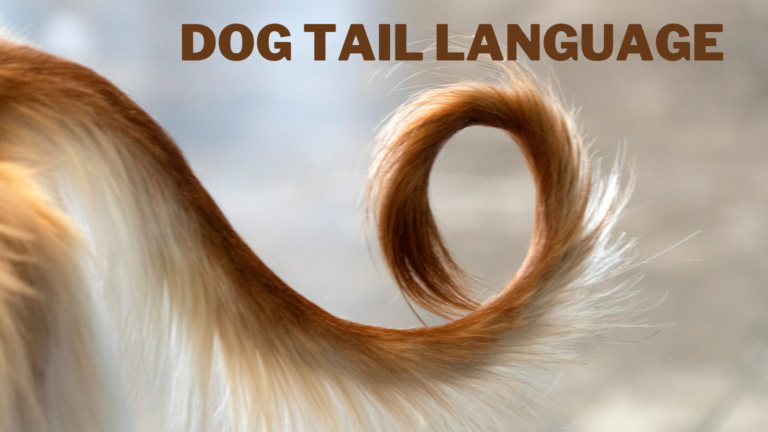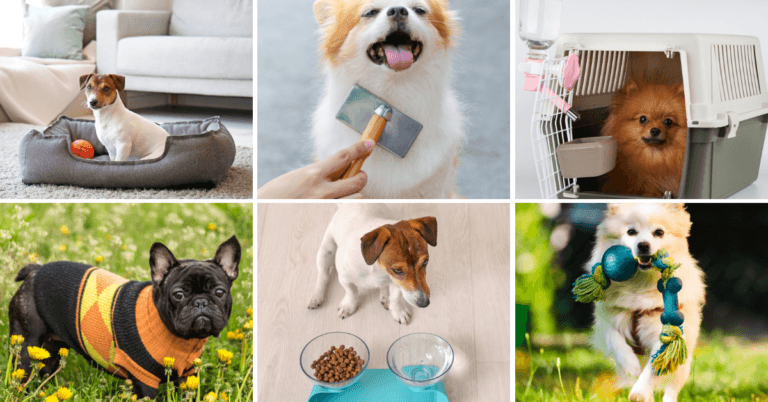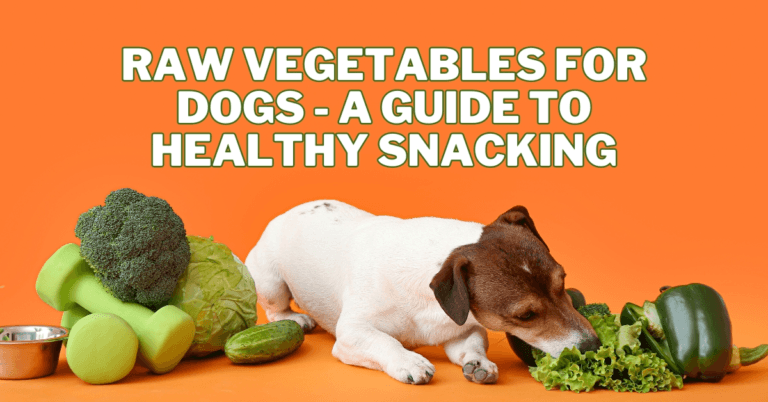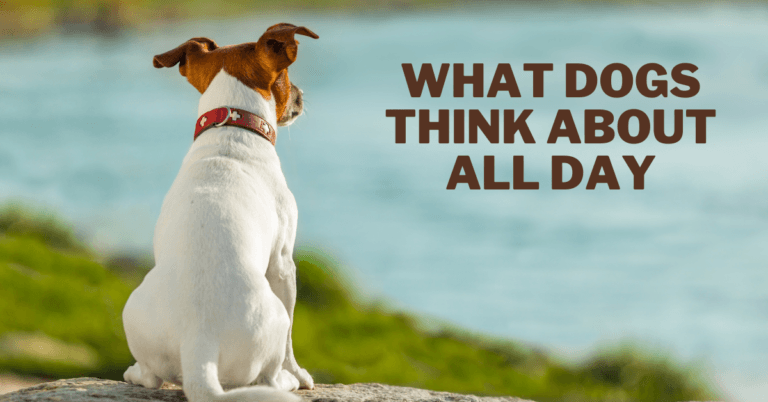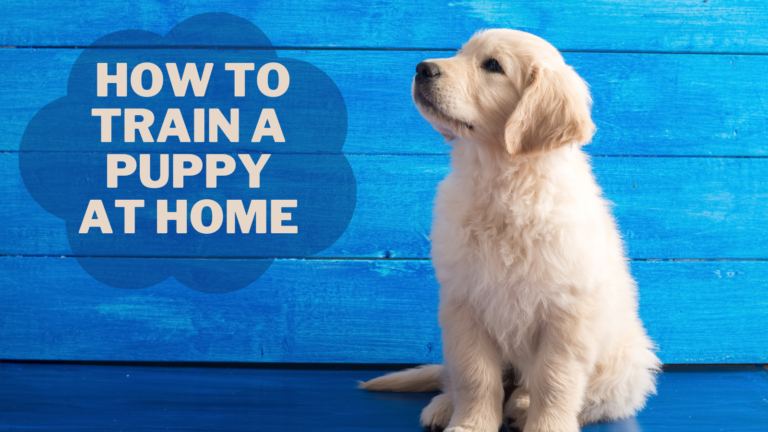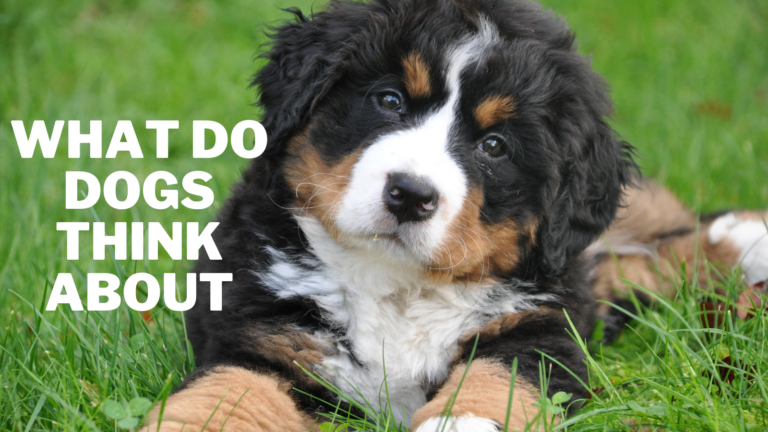How To Train A Puppy Not To Jump
How To Train A Puppy Not To Jump
Are you tired of your new furry friend jumping all over you and your guests? Jumping is common in puppies but can be frustrating and even dangerous if not addressed properly.
Fortunately, with the right training techniques and consistency, you can teach your puppy not to jump on people. This blog post will provide helpful tips and tricks to train your puppy not to jump, including positive reinforcement techniques and common mistakes to avoid. By the end of this post, you'll be equipped with the knowledge to help your furry friend become a well-behaved and obedient companion.

Why Do Puppies Jump On People?
Puppies jump on people for a variety of reasons, including:
1. Excitement
Puppies are naturally curious and excited about the world around them, and jumping can be a way for them to show their enthusiasm and joy. They may jump on people to say “hello” or express excitement about seeing their owner or someone new. This behaviour is common in young puppies and can signify their social nature.
However, allowing your puppy to jump on people can lead to problems, especially as they grow older and larger. Jumping can be dangerous for the puppy and the person they are jumping on, as they can accidentally scratch or bite while jumping, and the person may be knocked over or injured. Therefore, it is important to train your puppy not to jump and instead greet people more appropriately.
2. Attention-Seeking
Puppies are social animals and crave attention from their owners and others. Some puppies may jump on people to get attention and may have learned that jumping gets them the desired response.
For example, if a puppy jumps on their owner and the owner responds by petting or playing with them, the puppy may see this as a successful way to get attention and continue the behaviour.
This attention-seeking behaviour can become problematic if you can’t address it, as the puppy may jump more frequently and forcefully to get attention.
Teaching your puppy alternative ways to seek attention, such as sitting calmly or offering a toy to play with, is important. This will help your puppy learn they can get attention and affection from you without jumping.
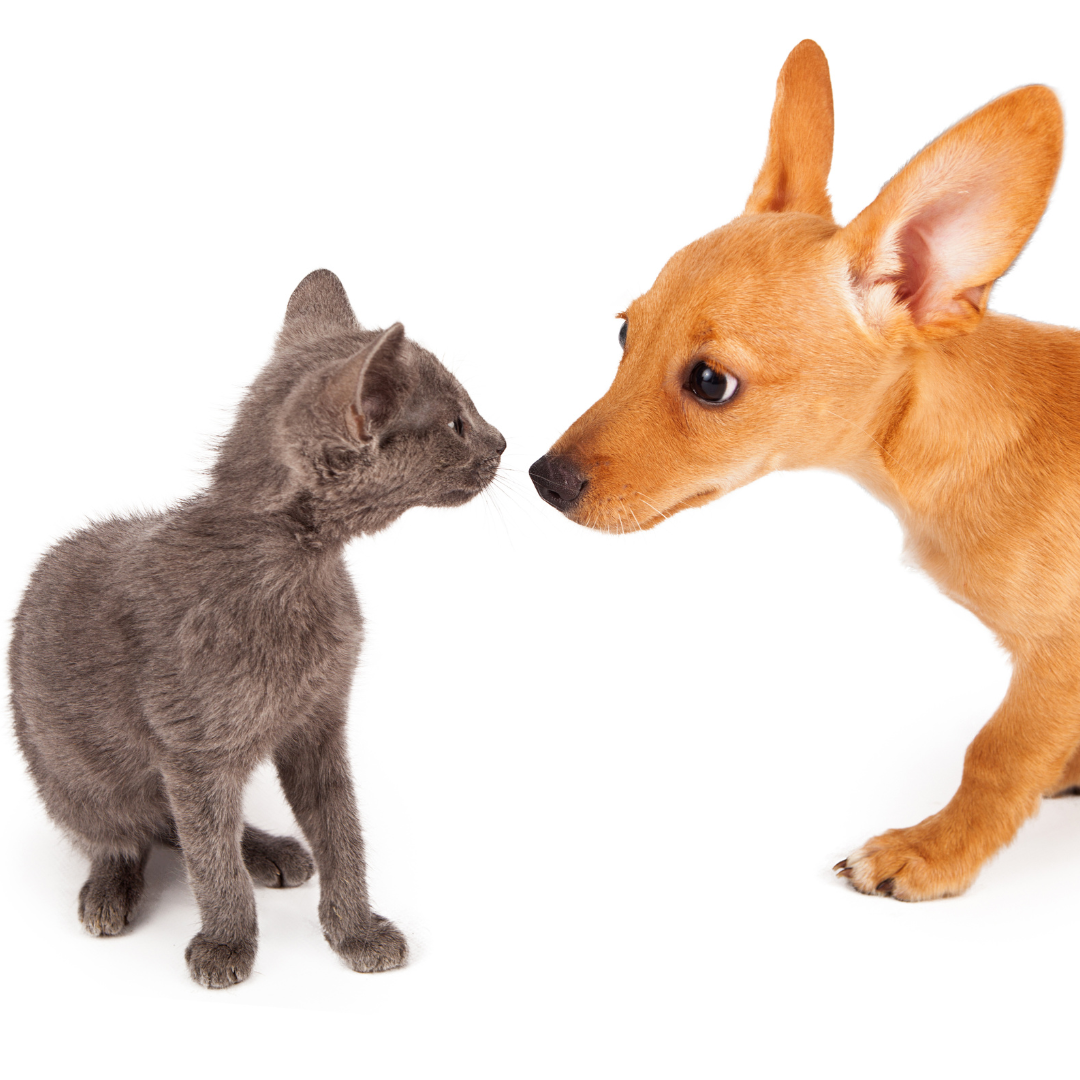
3. Greeting
Jumping can also be a way for puppies to greet people and show enthusiasm. Puppies are social animals and may jump on people to say “hello” and show their excitement at seeing someone new. They may also jump to get closer to the person's face to give them a lick or a nuzzle, a sign of affection for them.
While jumping can be a natural way for puppies to greet people, training them to do so more appropriately is important. Jumping can be dangerous for the puppy and the person they are jumping on, as they can accidentally scratch or bite while jumping, and the person may be knocked over or injured.
Therefore, it is important to teach your puppy to greet people with a sit or a down command and to reward them for this behaviour. This will help your puppy learn to show their excitement and affection more controlled and safe.
4. Exploration
Puppies use their mouths and noses to explore the world around them, and jumping may be a way to get a better look or smell of something they are curious about.
They may jump to get a better view of a person's face or to sniff their hair or clothing. This behaviour is especially common in younger puppies who are still learning about their surroundings and are eager to explore everything around them.
While this behaviour may be natural, it is important to teach your puppy that jumping is not an acceptable way to explore or interact with people. Encourage your puppy to use their nose and mouth to explore their environment, but teach them to do so calmly and calmly. This will help your puppy learn to interact appropriately with people and their surroundings.
5. Dominance
In some cases, puppies may jump on people to assert dominance, especially if they are not properly trained or socialized. This behaviour is more commonly seen in certain breeds, such as those known for being strong-willed or assertive.
Puppies may jump on people to show they are in charge or challenge authority. They may also jump as a way to demand attention or to get what they want. This behaviour can be a sign of underlying behavioural issues and should address by a professional trainer or behaviourist.
It is important to note that dominance-based training techniques, such as alpha rolling or physical punishment, are not effective or humane ways to address this behaviour. Instead, positive reinforcement training techniques that focus on rewarding good behaviour and teaching the puppy appropriate ways to interact with people are recommended.
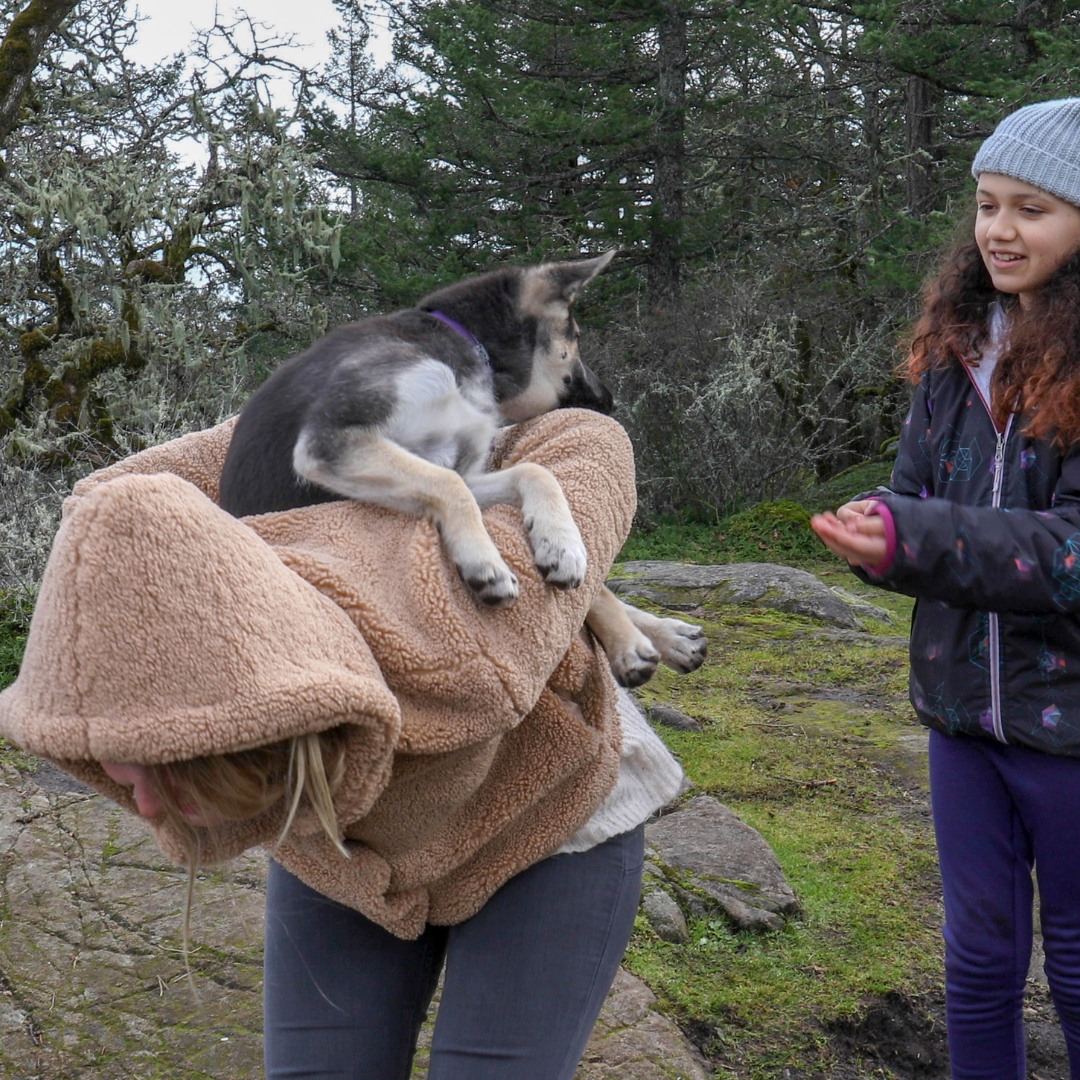
How To Train Your Puppy Not To Jump
Training a puppy not to jump requires patience, consistency, and positive reinforcement. Here are some steps you can take to teach your puppy not to jump:
1. Start Training Early
Puppies are like sponges; they absorb everything they see and experience around them, so starting their training early is crucial. Jumping can become an ingrained habit in puppies, so the earlier you start training them not to jump, the better the chance of success.
Additionally, young puppies tend to be more receptive to training and learn faster than older dogs. So, start training your puppy not to jump from an early age, and be patient and consistent in your training efforts.
2. Don't Punish Your Puppy
Punishing a puppy for jumping can be counterproductive and cause more harm than good. Punishment can also damage the bond between you and your puppy, affecting future training efforts. Focus on positive reinforcement and redirect your puppy's behaviour to a desirable alternative.
3. Ignore Jumping
When your puppy jumps on you, turn your back, cross your arms, or put your hands in your pockets to avoid physical contact. By doing so, you are showing your puppy that jumping does not result in attention or interaction from you. Additionally, you should avoid making eye contact, which can be seen as an interaction and may reinforce the jumping behaviour.
It is important to consistently ignore the jumping behaviour, as any attention, even negative, can encourage it. Once your puppy has all four paws on the ground, you can reward them with attention, such as petting or playing, to reinforce the desired behaviour.
It may take some time and patience for your puppy to understand that jumping is not an effective way to get your attention. Still, with consistency, they will eventually learn to keep all four paws on the ground when greeting people.

4. Reward Good Behaviour
Providing the reward immediately after the puppy exhibits the desired behaviour is important to reward good behaviour effectively. For example, if your puppy greets you calmly without jumping, give your puppy a treat or praise immediately. This will help your puppy associate the reward with the desired behaviour, making it more likely to repeat it.
It's also important to be consistent with your rewards. If you reward your puppy for not jumping one time but then ignoring the behaviour the next time, your puppy may need clarification and be less likely to repeat the desired behaviour.
Additionally, it's important to choose the right type of reward for your puppy. Some puppies may be more motivated by food treats, while others may respond better to verbal praise or playtime with a favorite toy. Experiment with different types of rewards to see what works best for your puppy.
5. Teach An Alternative Behaviour
Choose a behaviour incompatible with jumping, such as sitting or lying down. Use positive reinforcement techniques to train your puppy to perform the chosen behaviour on cue.
Start by asking your puppy to perform the behaviour when calm and not jumping. Reward them with treats and praise when they perform the behaviour correctly.
Once your puppy learns the behaviour, add a verbal cue such as “sit” or “down” to signal the behaviour. When they start to jump, give the verbal cue for the alternative behaviour and reward them when they perform it correctly.
It is important to note that training takes time and patience. Be consistent and persistent in your training, and avoid punishing or scolding your puppy for jumping. Instead, focus on reinforcing good behaviour and providing positive feedback.
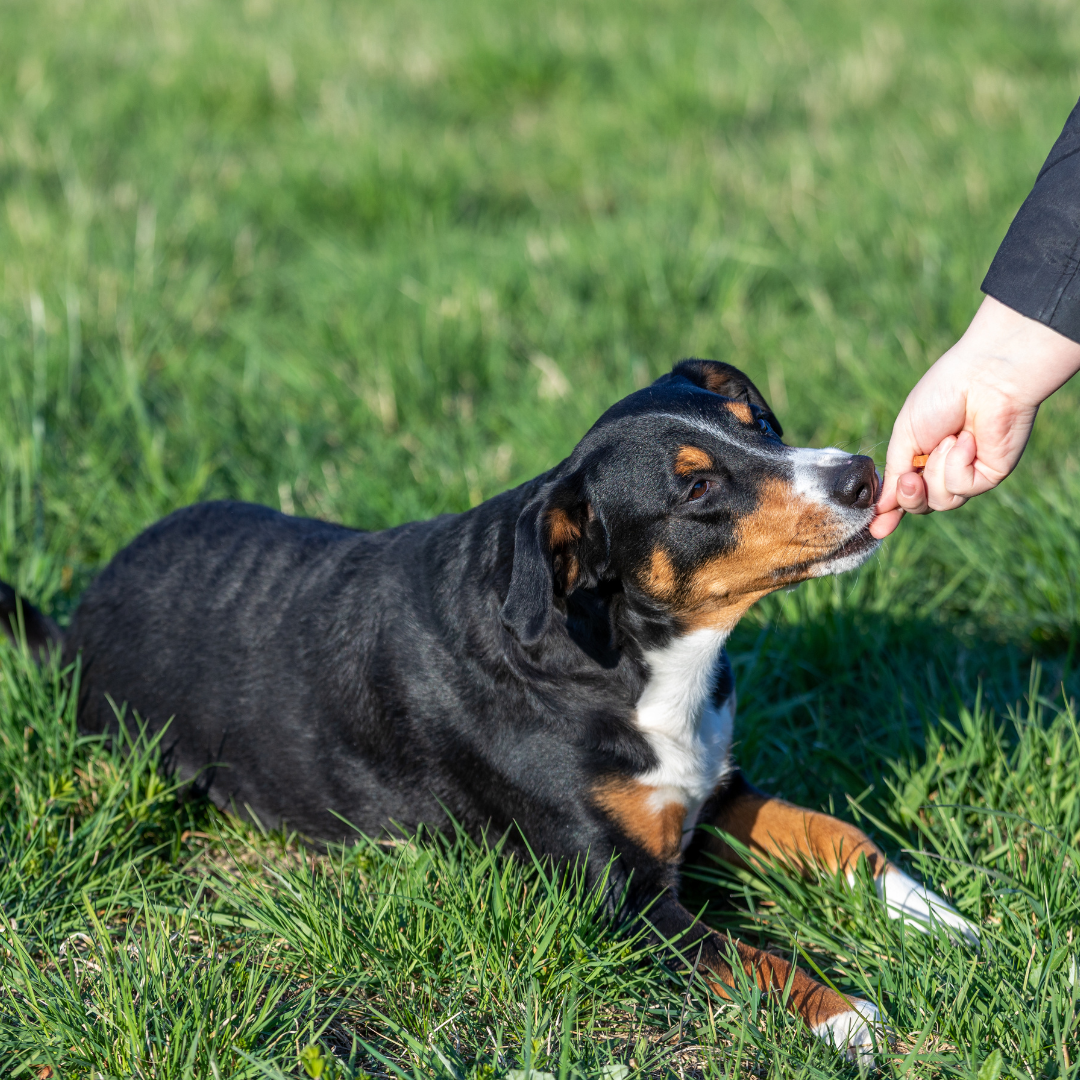
6. Consistency
Consistency is a key factor in puppy training, and this is especially true when it comes to teaching your puppy not to jump. Make sure that everyone who interacts with your puppy is aware of the training plan and is consistent in enforcing it. If one person allows jumping while another does not, your puppy may become confused and continue the unwanted behaviour.
Additionally, it's important to be patient and persistent in your training efforts. It may take time for your puppy to learn the desired behaviour, but with consistent training and positive reinforcement, it will eventually get the hang of it.
7. Avoid Reinforcing Jumping
When trying to train your puppy not to jump, it's important to avoid reinforcing the behaviour. This means not giving your puppy any attention or treats when they jump on you, even if it's negative attention, like pushing them away or yelling at them. Any attention, positive or negative, can be seen as a reward and can encourage the behaviour.
Instead, wait for your puppy to greet you calmly and politely. Once they are calm and have all four paws on the ground, you can give them attention or treats as a reward for their good behaviour. This will help them understand that jumping is unacceptable for getting attention or treats.

8. Socialization
Proper socialization is crucial for preventing unwanted behaviours such as jumping. It involves exposing your puppy to various people, animals, and environments in a positive and controlled manner, so they learn to feel comfortable and confident in different situations. When your puppy is well socialized, they are less likely to feel anxious or fearful and resort to jumping to cope.
To socialize your puppy, start by exposing them to different people, such as family members, friends, and strangers. Encourage them to approach new people on their terms and reward them with treats and praise for appropriate behaviour.
You can also introduce your puppy to other animals, such as friendly dogs or cats, but make sure the interactions are supervised and controlled.
Expose your puppy to different environments, such as parks, beaches, and busy streets. Again, reward them for appropriate behaviour and gradually increase the stimulation level as they become more comfortable. Avoid overwhelming your puppy with too much stimulation, leading to anxiety and unwanted behaviours such as jumping.
9. Use A Leash
When you train your puppy not to jump, using a leash to control their movements can be helpful. This can be especially important when you are in situations where your puppy is likely to jump, such as when greeting visitors to your home or walking.
To use a leash to prevent jumping, keep your puppy on a short leash and stand on their leash so they can't jump up. When your puppy greets you calmly, offer them praise and treats. Gradually increase the leash length as your puppy learns to control their jumping behaviour; eventually, you can remove the leash altogether.
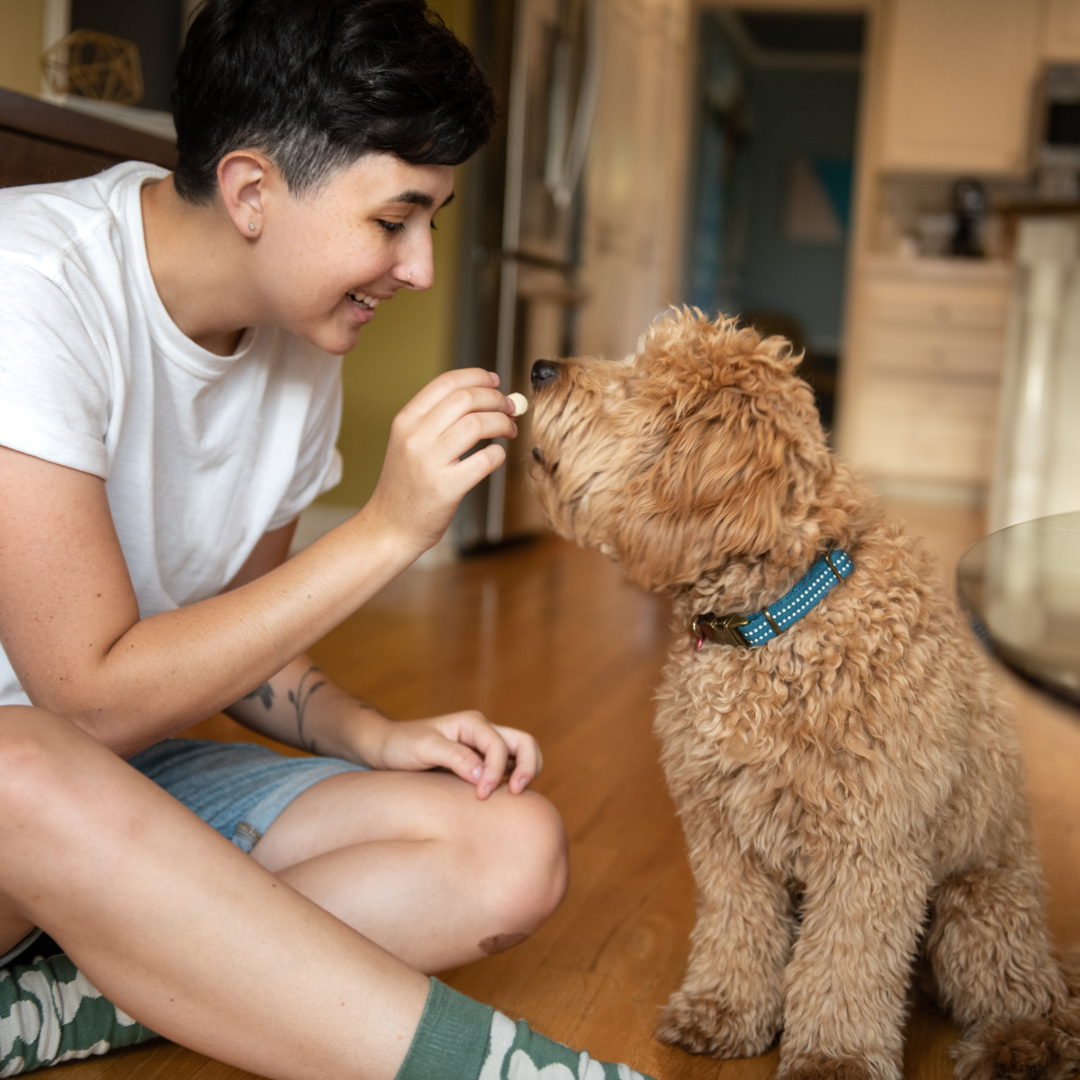
The Benefits Of Having A Well-Trained Puppy
Having a well-trained puppy who doesn't jump on people can bring a multitude of benefits, including:
1. Positive Interactions
When a puppy has been trained not to jump on people, they can greet them politely and calmly. This can create positive interactions between your puppy and others, making everyone feel more comfortable.
People are more likely to enjoy spending time with a well-trained puppy, and your puppy will also benefit from positive attention and socialization opportunities. Additionally, your puppy can engage in more activities and outings, as many places have rules against allowing jumping or unruly behaviour.
This means you can take your puppy with you more often, and they will be better behaved and more welcome in various settings. Overall, having a well-trained puppy who doesn't jump on people can improve your puppy's quality of life, relationships with others, and overall enjoyment of having a furry companion.
2. Safety
Jumping puppies can accidentally scratch, knock over, or injure individuals who cannot withstand the physical impact. This can be particularly dangerous for small children or elderly individuals who may not have the strength or balance to handle a rambunctious puppy.
Training your puppy not to jump can create a safer environment for everyone, reducing the risk of injury or accidents. Additionally, a well-trained puppy is less likely to dart into the street or get into other dangerous situations, keeping them safe and secure.
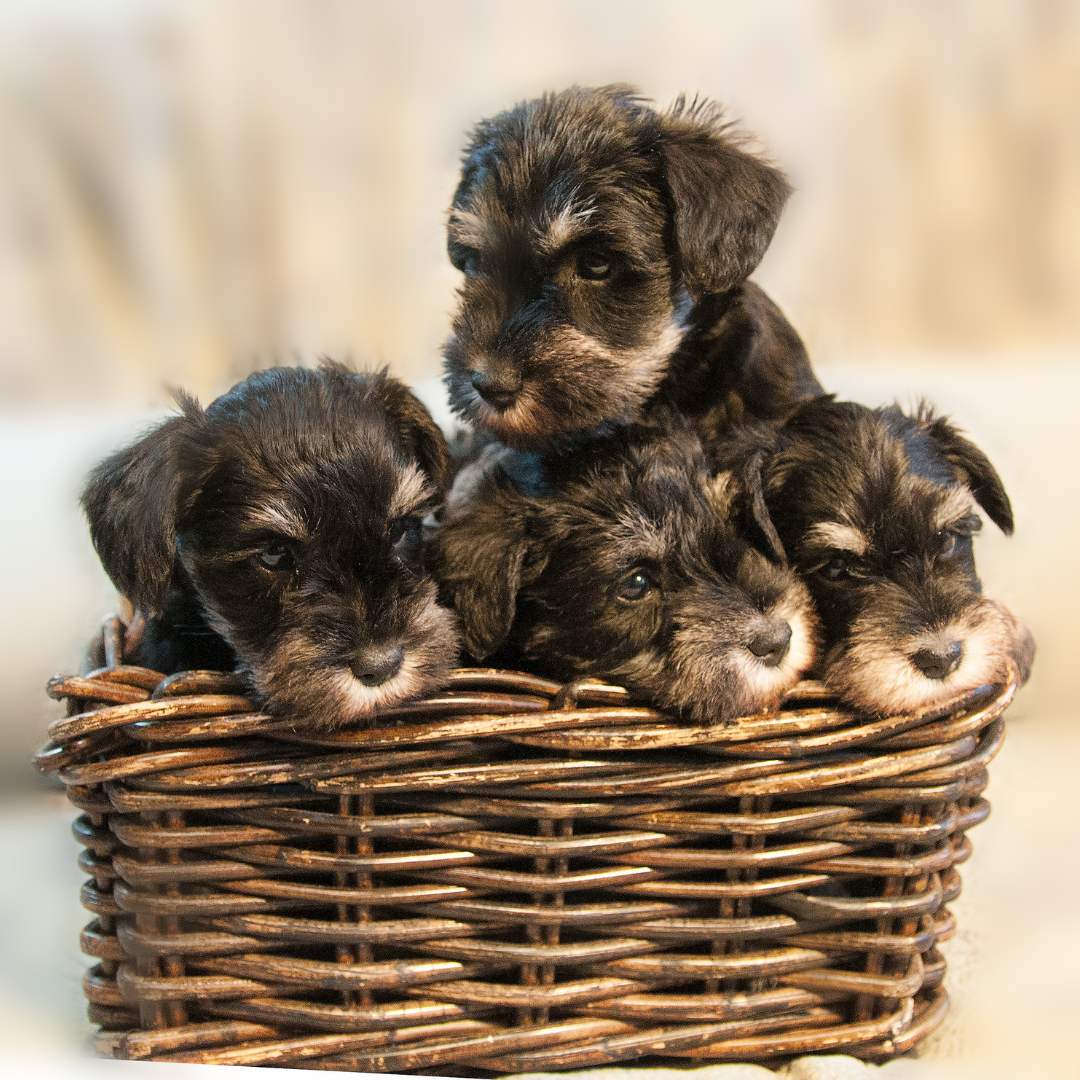
3. Improved Socialization
When a puppy jumps on people, it can be perceived as aggressive or intimidating and may cause others to avoid interacting with the puppy. This can lead to a lack of socialization opportunities for the puppy, impacting its behaviour and ability to interact with other dogs and people.
A well-trained puppy who doesn't jump can be more accepted in social situations and environments, allowing them to gain valuable socialization experiences that can improve their behaviour and overall well-being.
4. Increased Bonding
Training your puppy not to jump is an excellent way to build a stronger relationship with your pet. It creates a positive and communicative environment between you and your puppy, benefiting your mental and emotional health.
Additionally, the time spent training provides opportunities for bonding through play, reward-based training, and other positive interactions. As you and your puppy work together towards a common goal, you will likely develop a deeper understanding and appreciation for each other, leading to a stronger and more fulfilling relationship.
5. Better Behaviour
Jumping is often an indicator of a puppy's excitement and lack of impulse control, leading to other unwanted behaviours such as nipping or biting. By addressing jumping behaviour, you also promote better impulse control and reinforce positive behaviours, which can translate into better behaviour in other areas.
A well-trained puppy who has learned to control its jumping behaviour is likelier to exhibit good behaviour in different situations, making for a more pleasant experience for the puppy and its owners.
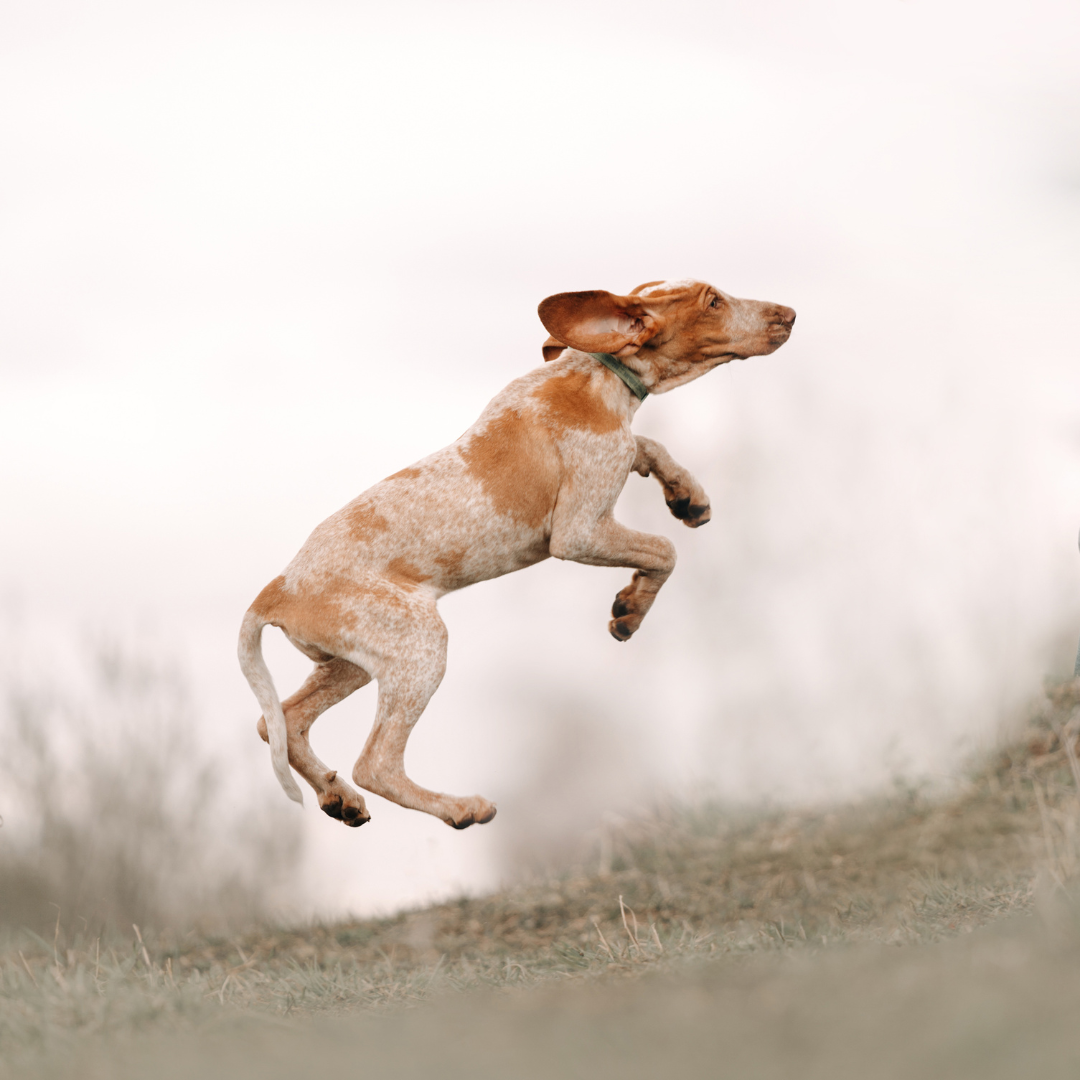
Conclusion
Teaching your puppy not to jump is important to their training and socialization. By understanding why puppies jump and using positive reinforcement techniques to train them, you can help your puppy learn appropriate greeting behaviour and prevent unwanted jumping.
Remember to be consistent and patient, and reward good behaviour; soon, your puppy will greet you and others calmly and politely. With time and effort, you can train your puppy to be a well-behaved and happy household member.
I trust you enjoyed this article on How To Train A Puppy Not To Jump. Please stay tuned for more blog posts to come shortly.
JeannetteZ
>>>Please click here to read my article on A Full Overview Of Dogs And Their Activity<<<
>>>Brain Training For Dogs Review<<<
My #1 Dog Training Recommendation
Your Opinion Is Important To Me
Thoughts? Ideas? Questions? I would love to hear from you. Please leave me your questions, experience, and remarks about this article on How To Train A Puppy Not To Jump in the comments section below. You can also reach me by email at Jeannette@Close-To-Nature.org.
Disclosure
This post may contain affiliate links. I earn from qualifying purchases as an Amazon Associate and other affiliate programs. Please read my full affiliate disclosure.
You might also enjoy these blog posts:
Best Female Dog Names With Meaning
Best Male Dog Names With Meaning
How To Train Your Puppy Not To Bite
The 26 Best Non-Toxic Dog Beds

